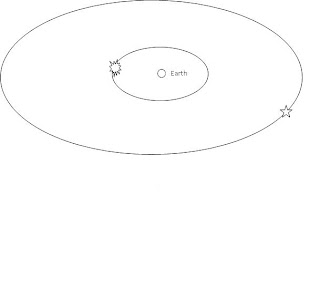Pioneer 10,11 anomaly, 1972 – 2004

The anomaly consists of a frequency blue drift of the radio signals from the Pioneer 10 and 11, detected in the microwave signal of the Pioneer 10 and other spaceships by Anderson and manifested by a residual Doppler shift that increases linearly with time. At first attributed to a small constant acceleration sunward, the drift is uniformly changing at ~ (5.99 ± 0.01) ×10-9 Hz/s, effective from ~20 to 70 AU from the Sun.
After 35 years the anomaly is still unexplained, yet very well-defined and said to be possibly new physics.
Ranada and Tiemblo have shown that the Pioneer and Earth flyby anomalies can be due to a difference in the temporal rate of atomic/EM clocks and celestial/gravity clocks, an inherent difference in EM/atomic time and astronomical/gravity time. Atomic time was use in communication with the Pioneer probes for navigation while the trajectory was plotted using a Newtonian/gravitational model. See the Pioneer anomaly as a quantum cosmological effect: http://arxiv.org/abs/0804.1904
They have measured the Doppler shifts of receding galaxies with atomic time and compared them with gravitational theory based on star time with the Friedmann equation – a Hubble law effect.
Are there two separate but coupled time bases and aethers- gravity and EM? A question that merits in-depth analysis.
.
Stars Atoms
The anomaly is an apparent acceleration, not a real one, caused by a progressive desynchronization of the astronomical and the atomic clock-times, after a prior synchronization. The desynchronization could be caused by a coupling between the gravitational aether and the EM aether. The coupling necessarily exists between gravity and EM aether since both pervade the universe.
Since gravitational theory uses star time and the Pioneer observers use atomic time (devices based on quantum physics), this desynchronization necessarily causes a discrepancy. The observed velocity of the spaceship is smaller than the predicted one, in such a way that the Pioneer seems to lag behind its expected position.
An adiabatic acceleration of light, and a small acceleration of the Pioneer towards the Sun could be mistaken the one for the other, because they do have the same fingerprint: a blue shift.
It turns out that the observational effects of a universal adiabatic acceleration of light and of an extra acceleration towards the Sun of a spaceship would be the same: a blue shift increasing linearly in time, precisely what was observed. The phenomenon would be due to a cosmological acceleration of the proper time of bodies with respect to the coordinate time.
It is argued by Ranada and Tiemblo that the permittivity and permeability of empty space are decreasing adiabatically, and the light is accelerating as a consequence of the progressive attenuation of the EM aether. The chronic inability to unify gravity and EM gives support to this fundamental difference in time between these two natural forces. This proposal gives exactly the same results for radar ranging observations as standard physics and does not conflict with any established law.
Astronomical time is defined by celestial periodic motion, while atomic time is founded on the oscillations of atomic systems. The effect is the relative march of the atomic clock of the detectors with respect to the astronomical clock of the orbit. An unavoidable coupling between gravitation and EM aether causes a progressive desynchronization of the astronomical and atomic clock-times and the observed velocity to be smaller than predicted - a deceleration.
Final notes:
· These two clocks could be different in principle - ticking at different rates - since they are based on different physical laws, time is more philosophical than physical, and we lack a unified theory of gravitation and quantum EM.
· Astronomical time is never used to measure EM interactions, which may explain why the coupling effect has escaped ection to date .
· Anderson et. al. have assumed that the Pioneer acceleration is directed Sunward, but the direction cannot be distinguished from Earthward, an artifact of the transmission direction. The Sun and Earth subtend less than a degree at Jupiter’s distance.
· Aren’t satellite periods also affected by the different time bases?
Yes, but the time delta is only a second every one or two years – the leap second of the IERS.
The slowing of the Earth’s rotation – which the leap second is meant to correct - is thus an illusion created by the difference in GI and EM chronometry. This is a major paradigm shift which surely deserves more attention – the Earth’s rotation is not only constant – the constant is zero(0)!
· If gravity and EM have a fundamental temporal difference – a different heartbeat - that can never be unified, the unification researchers should be told. After all, this is the goal of the GUT, TOE and String theories.
· The divergence of gravity and EM clocks seen in the Pioneer anomaly is apparent in other contexts.









